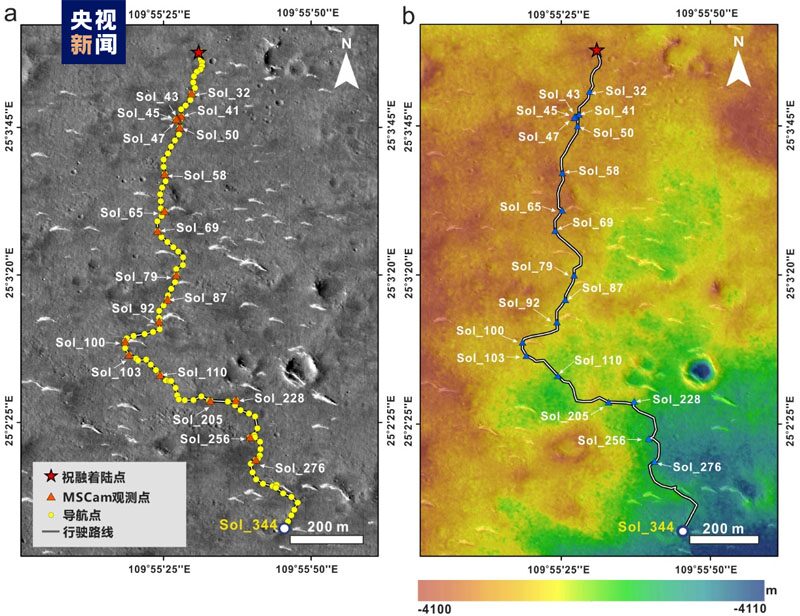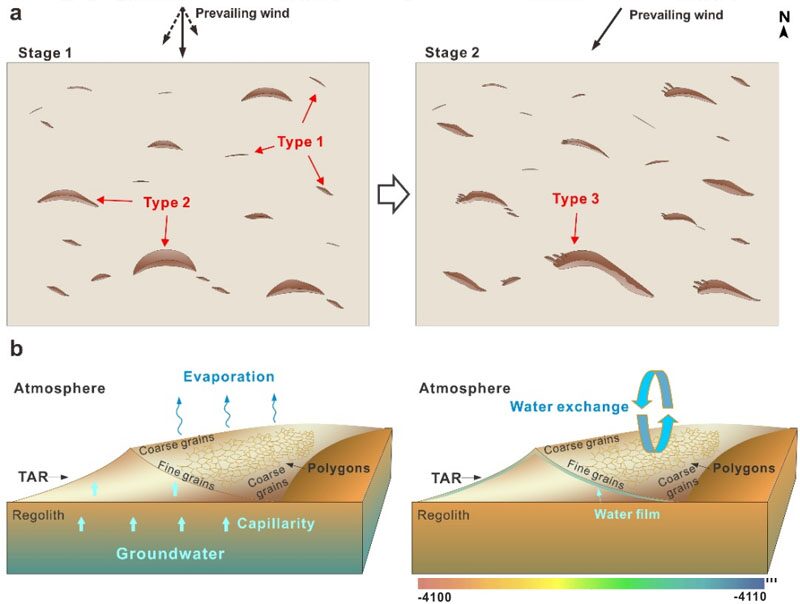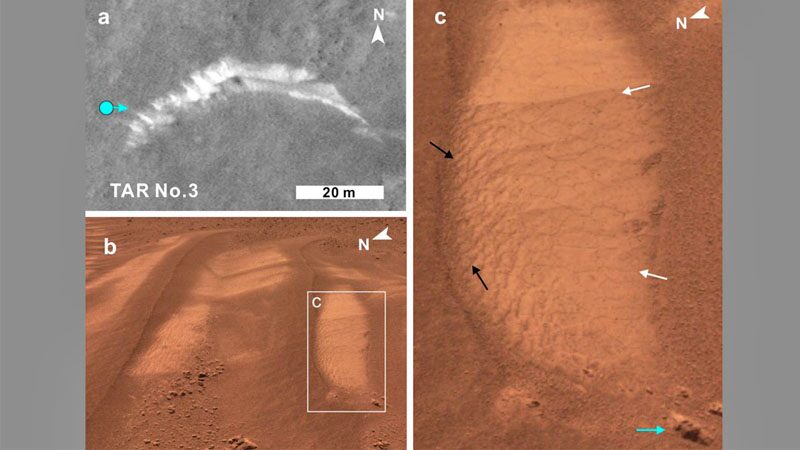นักวิจัยจีนพบหลักฐาน – ซินหัว รายงานการค้นพบของคณะนักวิจัยจากมหาวิทยาลัยธรณีศาสตร์แห่งประเทศจีน ในนครอู่ฮั่น หลังเจอหลักฐานโดยตรงที่พิสูจน์การมีอยู่ของ “มหาสมุทรโบราณ” บนที่ราบทางตอนเหนือของ ดาวอังคาร
แม้การศึกษาก่อนหน้านี้พบหลักฐานของเหลวปริมาณมากบนดาวอังคารในยุคแรก แต่ข้อกล่าวอ้างนี้ยังคงเป็นที่ถกเถียงเนื่องจากขาดการวิเคราะห์จากพื้นที่

นักวิจัยจีนพบหลักฐาน – Photo shows the landing platform of China’s first Mars rover Zhurong. Chinese researchers have discovered direct evidence that proves the existence of an ancient ocean on the northern plain of Mars, according to the China University of Geosciences, Wuhan. (CNSA/Handout via Xinhua)
บทความวิจัยที่เผยแพร่ในวารสารเนชันแนล ไซแอนซ์ รีวิว ระบุว่าทีมวิจัยนำโดยนายเซียว หลง ศาสตราจารย์มหาวิทยาลัยธรณีศาสตร์จีน วิเคราะห์ข้อมูลทางวิทยาศาสตร์จากกล้องบันทึกภาพมัลติสเปกตรัมของยานสำรวจพื้นผิวดาวอังคาร “จู้หรง” และพบหลักฐานทางธรณีวิทยาเกี่ยวกับหินของหินตะกอนทะเลบนพื้นผิวดาวอังคารเป็นครั้งแรก
ศาสตราจารย์เซียวกล่าวว่าเมื่อพิจารณาภาพจากกล้องบนยานสำรวจดังกล่าว เราพบว่าโครงสร้างชั้นหินที่ปรากฏออกมานั้นแตกต่างจากหินภูเขาไฟทั่วไปบนพื้นผิวดาวอังคารอย่างมีนัยสำคัญ รวมถึงโครงสร้างชั้นหินอันก่อตัวจาก “เนินทรายทับถมจากลมพัด” (Aeolian sands)
พร้อมเสริมว่าข้อมูลคุณสมบัติการไหลเวียนสองทิศทางของชั้นหินข้างต้น สอดคล้องกับกระแสน้ำขึ้น-น้ำลงพลังงานต่ำในสภาพแวดล้อมมหาสมุทรชายฝั่งน้ำตื้นของโลก ทั้งนี้ ผลการศึกษาฉบับดังกล่าวได้ส่งมอบข้อมูลสนับสนุนโดยตรงต่อการมีอยู่ของมหาสมุทรโบราณบนดาวอังคารในอดีต

The road map of China’s Zhurong rover and the terrain it travels. A research team led by Xiao Long, professor from the university, analyzed the scientific data from the multispectral camera of Mars rover Zhurong, and has for the first time found petrological evidence of marine sedimentary rocks on the surface of Mars. China Media Group

นักวิจัยจีนพบหลักฐาน – “When we looked at the images from the rover’s on-board camera, we discovered that the bedding structures of exposed rocks are significantly different from the common volcanic rocks on the surface of Mars as well as the bedding structures formed by aeolian sands,” Xiao said. China Media Group
Advertisement

Polygonal features on the surface of TARs along the traverse of China’s Mars rover Zhurong. He added that the bidirectional flow characteristics indicated by the bedding knowledge were consistent with the low energy tidal flows in the Earth’s shore-shallow ocean environment. China Media Group
ข่าวที่เกี่ยวข้อง:














